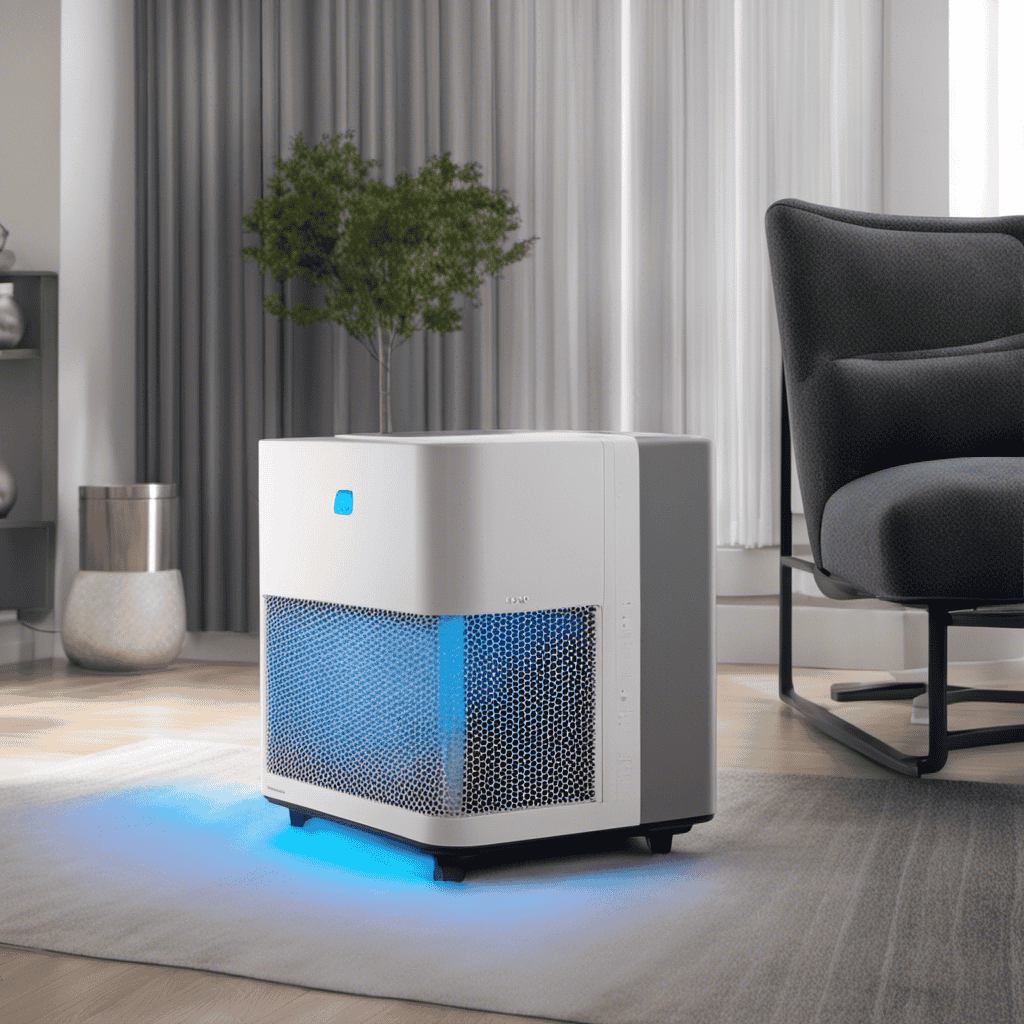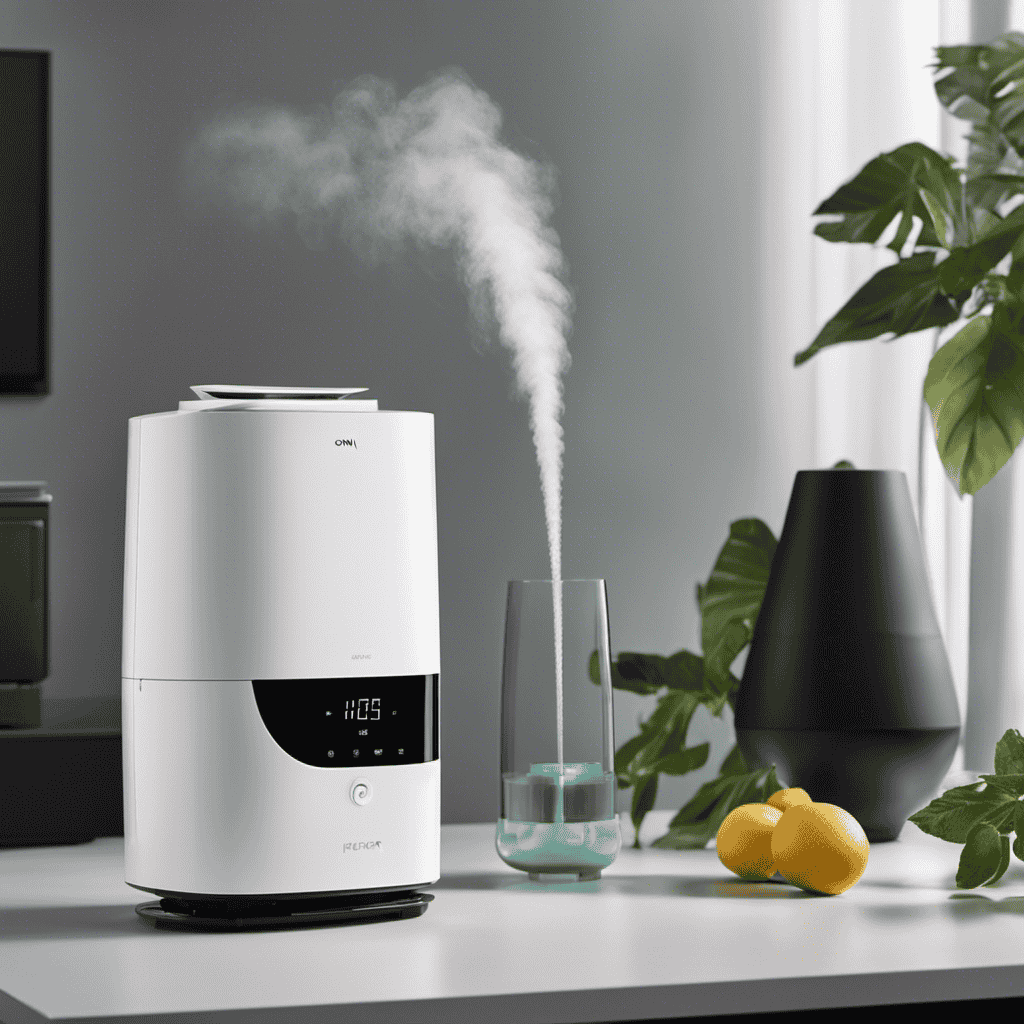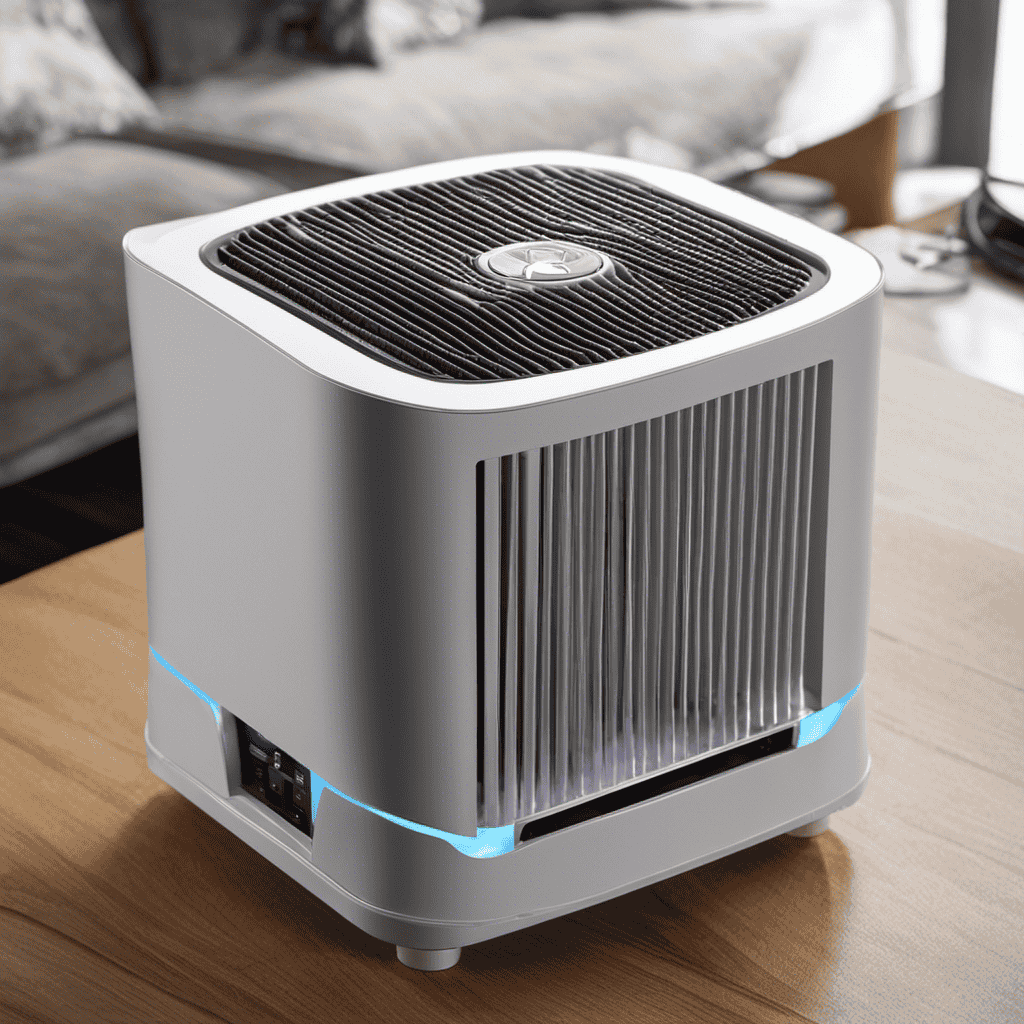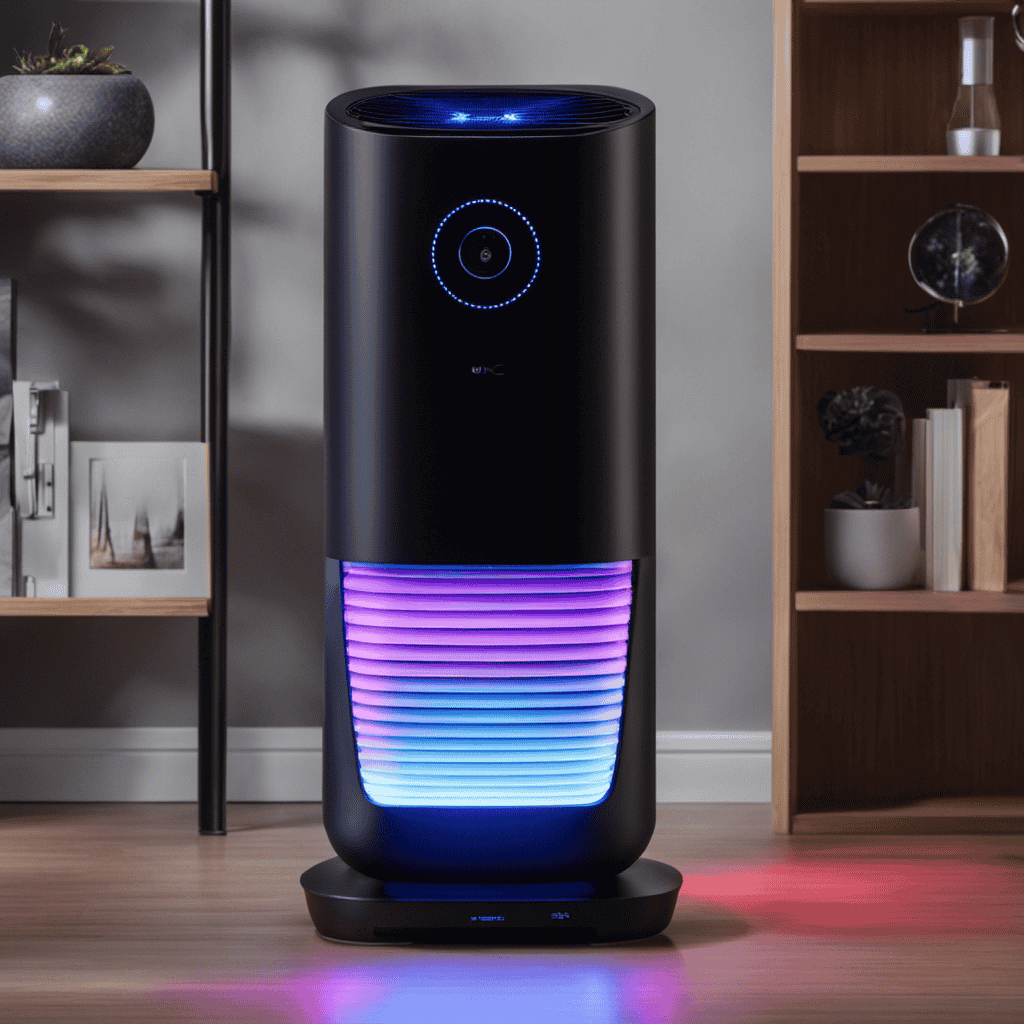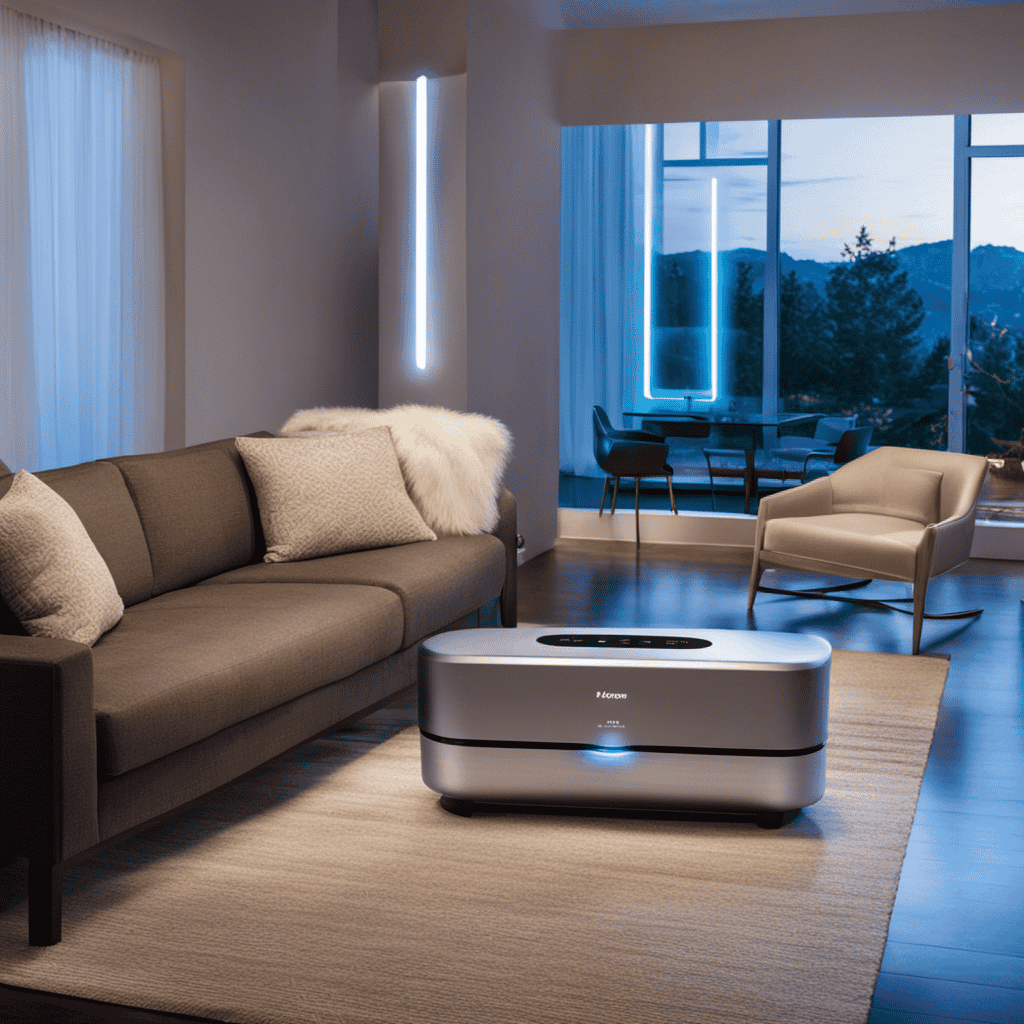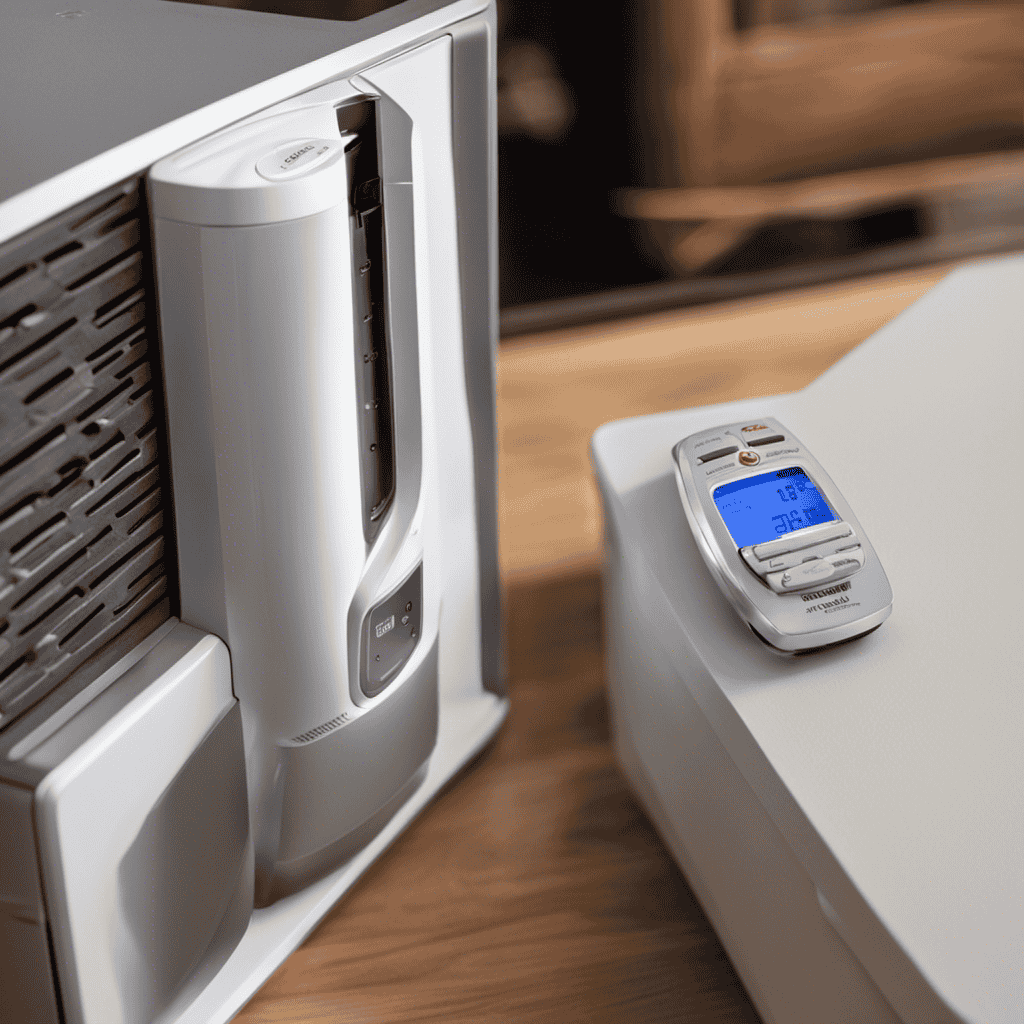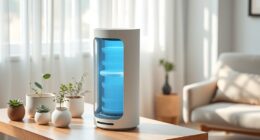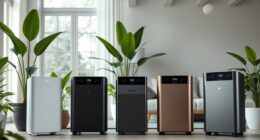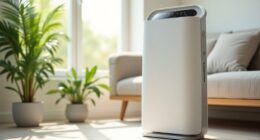Upon entering my house, the atmosphere feels dense and oppressive. I recognize the necessity to enhance the air quality, yet I am conflicted about whether to choose an electrostatic air filter or an air purifier. Which would be the superior option?
In this article, I will examine the pros and cons of both options, discussing their effectiveness, efficiency, and maintenance requirements.
By the end, you’ll have the knowledge to make an informed decision on whether an electrostatic air filter or an air purifier is the superior choice for your home.
Key Takeaways
- Electrostatic air filters are effective at trapping small particles and improving indoor air quality.
- Air purifiers remove a wide range of airborne pollutants and help reduce respiratory issues and allergies.
- Regular maintenance and cleaning are necessary for both electrostatic air filters and air purifiers to maintain their effectiveness.
- Electrostatic air filters are reusable and have a longer lifespan, while air purifiers require regular filter replacements.
Pros and Cons of Electrostatic Air Filters
Electrostatic air filters are effective at trapping small particles, but they require regular cleaning. These filters use an electrostatic charge to attract and capture airborne particles, such as dust, pollen, and pet dander.
The benefit of electrostatic air filters is that they can effectively remove these particles from the air, improving indoor air quality. They are also reusable, which can save money in the long run. However, there are some drawbacks to consider.
Electrostatic filters may not be as effective at trapping larger particles or odors. Additionally, they need to be cleaned regularly to maintain their effectiveness. Comparing electrostatic air filters to traditional filters, such as fiberglass or pleated filters, the former tends to have a higher initial cost but can last longer and provide better filtration.
Traditional filters, on the other hand, are typically disposable and require replacement more frequently. Ultimately, the choice between electrostatic air filters and traditional filters depends on individual needs and preferences.
Benefits and Limitations of Air Purifiers
To get the most out of an air purifier, it’s important to understand its benefits and limitations. Air purifiers are devices designed to remove pollutants from the air, improving indoor air quality and potentially providing health benefits.
Here are three key benefits of using an air purifier:
-
Removal of airborne particles: Air purifiers can effectively remove dust, pet dander, pollen, and other allergens from the air, reducing allergic reactions and improving respiratory health.
-
Odor and chemical removal: Many air purifiers are equipped with activated carbon filters that can remove unpleasant odors and harmful chemicals from the air, making the indoor environment more pleasant and safer to breathe.
-
Reduction of airborne diseases: Air purifiers with HEPA filters can trap and remove airborne bacteria and viruses, helping to prevent the spread of illnesses and improving overall health.
While air purifiers offer these health benefits, it’s important to consider their cost effectiveness. They require regular filter replacements and may consume electricity, adding to the overall cost. Additionally, air purifiers may have limitations in terms of their effectiveness in large spaces or against certain types of pollutants.
Understanding these benefits and limitations can help make an informed decision about the use of air purifiers for improving indoor air quality.
Effectiveness of Electrostatic Air Filters
If you’re looking for an alternative to regular air filters, you might want to consider trying an electrostatic option. Electrostatic air filters work by using static electricity to capture and trap particles in the air. They are known for their effectiveness in removing airborne contaminants such as dust, pollen, pet dander, and mold spores. To give you a better understanding of their effectiveness, here is a comparison table:
| Air Filter Type | Particle Size | Efficiency |
|---|---|---|
| Electrostatic | 0.01-1 micron | 95% |
| Regular | 1-10 microns | 50% |
As you can see, electrostatic air filters have a higher efficiency in capturing smaller particles compared to regular filters. However, it’s important to note that electrostatic filters require regular maintenance to maintain their effectiveness. They need to be cleaned regularly to remove trapped particles and prevent them from becoming clogged. Regular filter replacement is also necessary to ensure optimal performance. Overall, electrostatic air filters can be an effective alternative with proper maintenance.
Efficiency of Air Purifiers in Removing Pollutants
When considering an alternative to regular filters, you might be interested in the efficiency of air purifiers in removing pollutants. Air purifiers are designed to improve air quality by effectively capturing and removing various airborne contaminants. Here are three reasons why air purifiers are an excellent choice for improving air quality and promoting health benefits:
-
Filtration Efficiency: Air purifiers use advanced filtration systems that can effectively capture and remove a wide range of pollutants, including dust, pollen, pet dander, mold spores, and even harmful gases and odors.
-
Health Benefits: By removing these pollutants from the air, air purifiers can help reduce the risk of respiratory issues, allergies, and asthma attacks. They can also create a cleaner, healthier environment for individuals with compromised immune systems.
-
Versatility: Air purifiers can be used in various settings, such as homes, offices, and medical facilities. They can effectively improve indoor air quality in different spaces, providing a healthier living or working environment.
Considering the efficiency and health benefits of air purifiers, they are a reliable option for those seeking to enhance air quality and promote well-being.
Now, let’s explore the maintenance and cleaning of electrostatic air filters.
Maintenance and Cleaning of Electrostatic Air Filters
Regular maintenance and cleaning are necessary to ensure the optimal performance of electrostatic air filters. Electrostatic air filters work by using an electrostatic charge to attract and trap airborne particles. Over time, these filters can become clogged with dust, dirt, and other debris, which can reduce their effectiveness in removing pollutants from the air.
To clean an electrostatic air filter, first, turn off the power to the unit. Then, remove the filter and gently rinse it with water to remove any accumulated debris. Allow the filter to dry completely before reinstalling it. It is important to clean the filter regularly, following the manufacturer’s instructions, to prevent the buildup of contaminants and maintain the filter’s efficiency.
Proper maintenance and cleaning will help ensure that the electrostatic air filter continues to provide clean and fresh air for your indoor environment.
When it comes to filter replacement and maintenance for air purifiers, it is important to follow the manufacturer’s guidelines. Regularly replacing the filters in your air purifier is crucial for maintaining its efficiency in removing pollutants from the air. Different air purifiers have different filter replacement schedules, so it is important to check the user manual or consult the manufacturer for specific instructions.
Additionally, it is recommended to clean the exterior of the air purifier regularly to remove any dust or dirt that may have accumulated. By properly maintaining and replacing the filters in your air purifier, you can ensure that it continues to effectively clean the air in your home or office.
Filter Replacement and Maintenance for Air Purifiers
To ensure the efficiency of your air purifier, make sure to regularly replace and maintain its filters according to the manufacturer’s guidelines. Proper filter replacement is crucial for maintaining optimal air quality and prolonging the lifespan of your device.
Here are a few tips to help you get the most out of your air purifier filters:
-
Pros and Cons of Filter Replacement:
- Pros: Regular filter replacement ensures clean and healthy air, reduces allergens and pollutants, and improves the overall effectiveness of the air purifier.
- Cons: Filter replacement can be costly, especially for high-end models with specialized filters. It may also require some time and effort to locate and purchase the correct filters.
-
Tips for Extending Filter Lifespan:
- Vacuum the outer surface of the filter regularly to remove larger particles and debris.
- Consider using a pre-filter to capture larger particles and extend the lifespan of the main filter.
- Place the air purifier in a well-ventilated area to reduce the accumulation of dust and contaminants on the filters.
Cost Analysis: Electrostatic Air Filters Vs Air Purifiers
Using electrostatic air filters can be a more cost-effective option compared to traditional air purifiers. When considering air quality improvement and conducting a long term cost analysis, electrostatic air filters offer several advantages.
Unlike air purifiers that require regular filter replacements, electrostatic air filters are washable and reusable, eliminating the need for ongoing filter purchases. This not only reduces long term expenses but also minimizes waste.
Additionally, electrostatic air filters are highly efficient in capturing small particles, allergens, and pollutants, ensuring cleaner air in your home or office. They utilize an electrostatic charge to attract and trap airborne particles, providing continuous air purification without the need for costly filter replacements.
Therefore, when looking for a cost-effective option to improve air quality, electrostatic air filters are a reliable choice.
Factors to Consider When Choosing Between Electrostatic Air Filters and Air Purifiers
When comparing electrostatic air filters and air purifiers, there are several key points to consider.
Firstly, the filtration effectiveness of both options should be compared to determine which one can remove a higher percentage of pollutants from the air.
Secondly, maintenance requirements and costs play a crucial role in decision-making, as one option may require more frequent cleaning or filter replacements than the other.
Lastly, energy consumption is an important factor to consider, as it can affect long-term costs and environmental impact.
Filtration Effectiveness Comparison
If you want to compare the filtration effectiveness between an electrostatic air filter and an air purifier, you should consider factors such as particle removal efficiency and filter maintenance requirements.
Here is a comparison of the pros and cons of electrostatic air filters and the benefits and limitations of air purifiers:
-
Electrostatic air filters:
- Pros: They can capture small particles, such as pollen and pet dander, effectively. They have a long lifespan and do not require frequent filter replacement.
- Cons: They may produce ozone as a byproduct, which can be harmful to health. They may not be as effective in removing larger particles, such as dust and mold spores.
-
Air purifiers:
- Pros: They can remove a wide range of airborne pollutants, including allergens, smoke, and odors. They often have multiple filtration stages, ensuring high particle removal efficiency.
- Cons: They require regular filter replacements, which can add to the maintenance costs. Some air purifiers may produce noise during operation.
When comparing the filtration effectiveness, it is important to consider both the particle removal efficiency and the maintenance requirements of the electrostatic air filter and air purifier.
Maintenance Requirements and Costs
The regular maintenance and filter replacement costs should be considered when comparing the effectiveness of electrostatic air filters and air purifiers. While both options are designed to improve indoor air quality, they differ in terms of cost and lifespan. Let’s analyze the cost comparison and lifespan of these two options using the table below:
| Electrostatic Air Filters | Air Purifiers | |
|---|---|---|
| Cost | Initial cost is higher but no ongoing filter replacement costs | Lower initial cost but requires regular filter replacements |
| Lifespan | Long lifespan, typically 6-12 months | Shorter lifespan, filters need to be replaced every 3-6 months |
When it comes to cost, electrostatic air filters may seem more expensive initially, but they do not require frequent filter replacements, which can save money in the long run. On the other hand, air purifiers have a lower initial cost, but the ongoing filter replacement costs should be considered. Additionally, electrostatic air filters tend to have a longer lifespan, while air purifiers require more frequent filter replacements. It is important to consider both the cost and lifespan analysis when deciding between these two options.
Energy Consumption Differences
To determine the energy consumption differences, you should compare the power usage of both options. When it comes to energy efficiency, it is important to consider the environmental impact as well. Here are three key points to consider:
-
Energy Efficiency: Electrostatic air filters are known for their energy efficiency. They work by using an electric charge to capture particles in the air, which means they require less power to operate compared to traditional air purifiers.
-
Power Usage: Air purifiers typically use fans to circulate air and remove contaminants. These fans can consume a significant amount of energy, especially if the purifier runs continuously. On the other hand, electrostatic air filters don’t require fans, resulting in lower power consumption.
-
Environmental Impact: With their lower energy consumption, electrostatic air filters can contribute to reducing overall energy usage and carbon emissions. This makes them a more environmentally friendly choice compared to traditional air purifiers.
Considering both energy efficiency and environmental impact, electrostatic air filters are a favorable option for those looking to minimize their energy consumption while maintaining clean air quality.
Frequently Asked Questions
Are Electrostatic Air Filters Safe to Use in Homes With Pets or Small Children?
Electrostatic air filters can be safe for homes with pets or small children. They use an electrostatic charge to trap particles, which can be effective in removing allergens. However, they may produce ozone, which can be harmful in high concentrations.
Can Air Purifiers Effectively Remove Allergens Such as Pollen and Dust Mites?
Air purifiers are highly effective in removing allergens like pollen and dust mites, providing relief for allergy sufferers. They surpass the efficiency of electrostatic air filters in reducing pet dander, ensuring a cleaner and healthier home environment.
How Often Should Electrostatic Air Filters Be Cleaned to Maintain Their Efficiency?
To maintain the efficiency of electrostatic air filters, they should be cleaned regularly. Proper cleaning techniques, such as washing with water or using a vacuum, can help remove accumulated dust and maintain optimal performance. Regular maintenance ensures the benefits of cleaner air and improved air quality.
Do Air Purifiers Have Any Negative Effects on Indoor Air Quality?
Air purifiers can have both advantages and disadvantages when it comes to indoor air quality. While they can effectively remove pollutants, they may also produce ozone, which can be harmful to respiratory health.
Which Option Is More Cost-Effective in the Long Run: Electrostatic Air Filters or Air Purifiers?
In terms of long-term cost-effectiveness, electrostatic air filters may be a better option compared to air purifiers. They require less energy consumption, which is beneficial for the environment and can save money on utility bills.
– Is an Air Purifier More Effective at Removing Allergens Than a Dehumidifier?
When it comes to removing allergens, a dehumidifier versus air purifier debate often arises. While a dehumidifier can help control moisture levels that contribute to mold and dust mites, an air purifier is more effective at capturing and eliminating airborne allergens like pet dander, pollen, and mold spores.
Conclusion
In conclusion, both electrostatic air filters and air purifiers have their advantages and disadvantages.
While electrostatic air filters are effective in capturing larger particles, they may not be as efficient in removing smaller pollutants.
On the other hand, air purifiers are often more versatile and can effectively eliminate a wider range of contaminants. However, they require regular filter replacement and can be more costly in the long run.
Despite this, the overall effectiveness and efficiency of air purifiers make them a better choice for those seeking a comprehensive solution to indoor air quality.
